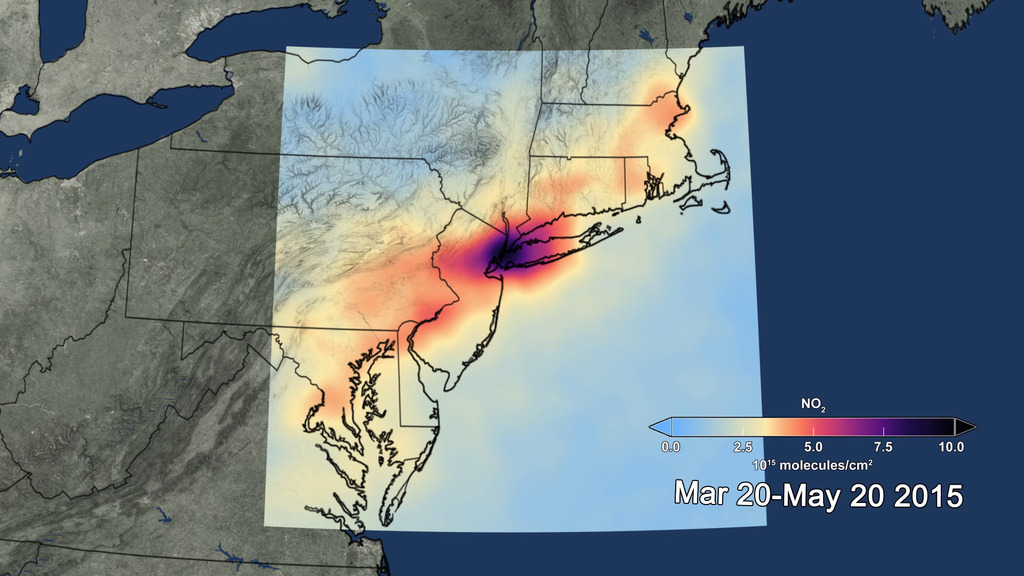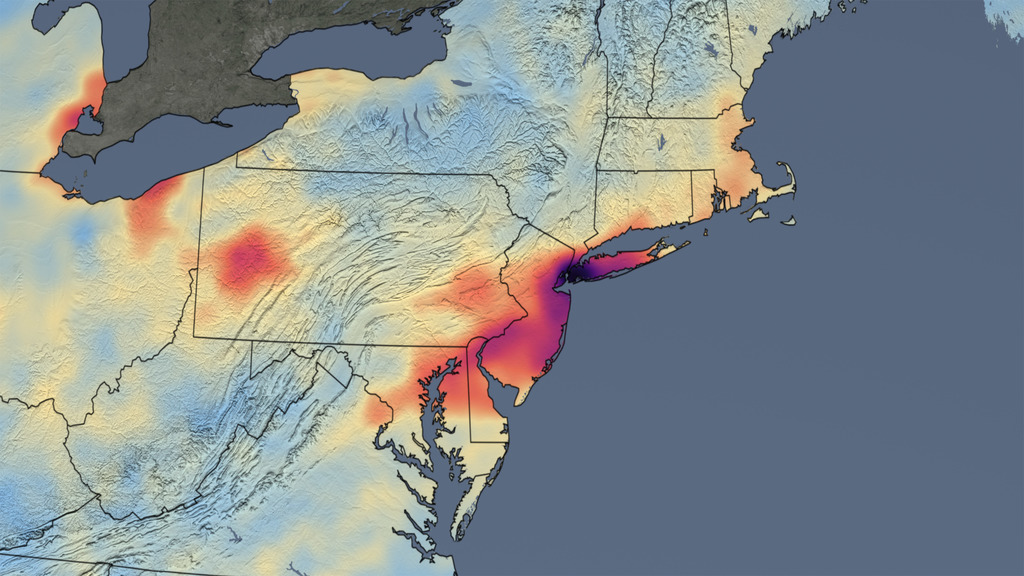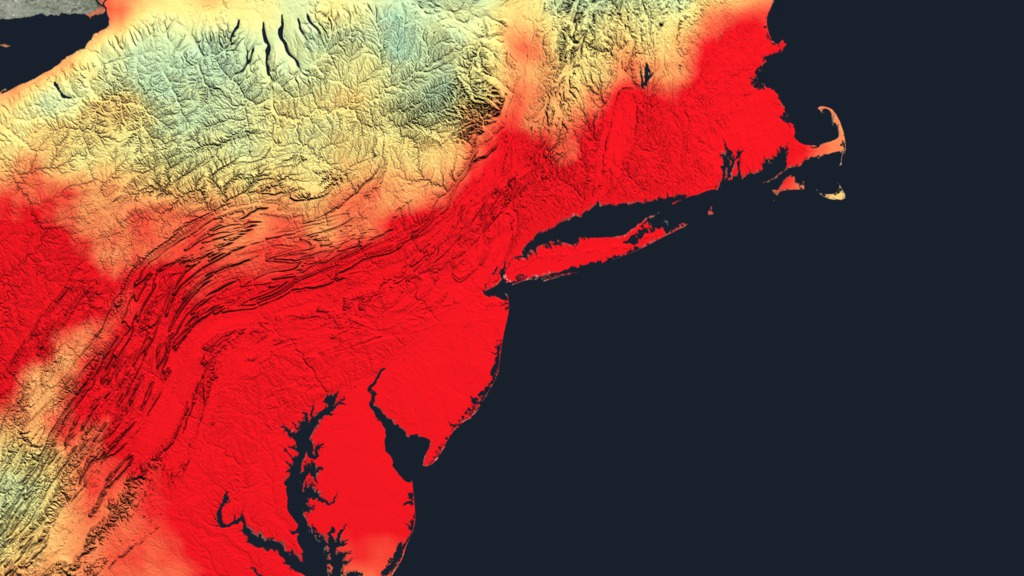Pandemic Before And After: Northeast US 2015-2019 Versus 2020
Pandemic Before And After: Northeast US 2015-2019 Versus 2020
Over the past several weeks, the Northeast U.S. has seen significant reductions in air pollution over many of its major metropolitan areas, such as New York City and Baltimore. Similar reductions in air pollution have been observed across the globe. These recent improvements in air quality have come at a high cost, as communities grapple with the widespread stay-at-home advisories that began about a month ago as a result of the spread of COVID-19. The slider above shows satellite data of NO2 from the Aura Ozone Monitoring Instrument (OMI) over the Northeast United States in March. The image on the left shows the mean of the period from 2015 through 2019, while the image on the right shows the mean for 2020. Though variations in weather from year to year cause variations in the monthly means for individual years (see animation below), March 2020 shows the lowest values as compared to any of the monthly values for March during the OMI data record, which spans 2005 to present. In fact, the data indicate that the NO2 levels in March 2020 are about 30% lower on average across the region of the I-95 corridor from Washington, DC to Boston than when compared to the mean of 2015 to 2019. Caution: Further analysis is required to rigorously quantify the amount of the change in NO2 levels associated with changes in pollutant emissions versus natural variations in weather. The images are free and publicly-available and may be downloaded. NEW! For scientists: Global OMI NO2 Monitor.
For More Information
Credits
Please give credit for this item to:
NASA's Goddard Space Flight Center
-
Animator
- Mark Malanoski (Global Science and Technology, Inc.)
-
Research scientist
- Bryan Duncan (NASA/GSFC)
Release date
This page was originally published on Monday, May 1, 2023.
This page was last updated on Monday, February 3, 2025 at 12:53 AM EST.
Missions
This page is related to the following missions:Datasets used
-
[Aura: OMI]
ID: 147
Note: While we identify the data sets used on this page, we do not store any further details, nor the data sets themselves on our site.


